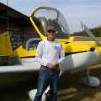-
Posts
1,169 -
Joined
-
Last visited

David Lloyd replied to gtsio520's topic in Vintage Mooneys (pre-J models)

David Lloyd replied to AdamJD's topic in Avionics/Panel Discussion

David Lloyd replied to gtsio520's topic in Vintage Mooneys (pre-J models)

David Lloyd replied to gtsio520's topic in Vintage Mooneys (pre-J models)

David Lloyd replied to gmonnig's topic in Avionics/Panel Discussion

David Lloyd replied to Rusty Pilot's topic in Vintage Mooneys (pre-J models)
We have placed cookies on your device to help make this website better. You can adjust your cookie settings, otherwise we'll assume you're okay to continue.